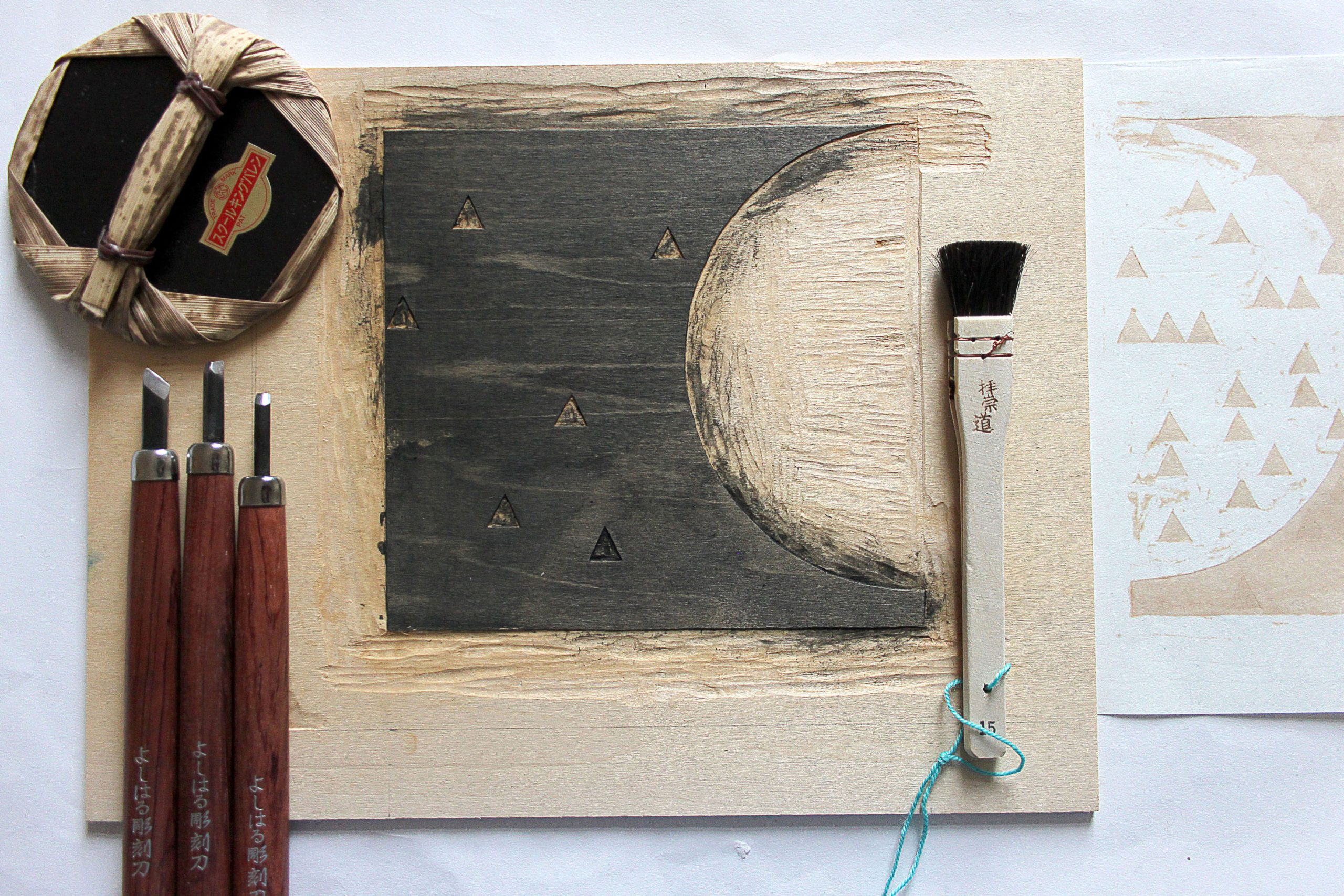We are always searching to work with skilled artists who are experts within their fields to provide you with diverse and inspiring creative courses for every season.
This Spring, we are excited to be working with Sumiko Eadon for her upcoming course ‘Japanese Woodblock Printmaking (Mokuhanga) for Absolute Beginners’. We interviewed Sumiko to explore her background and artistic practice.
How would you describe your artistic practice?
My current practice is drawing, painting, printmaking and some mixed media. In the past, I have done a lot of printmaking using photographic images but recently I am focussing on abstract drawing and make watercolour paintings and prints from those drawings. I also do some bookbinding to make sketchbooks.

Trees carved out of wood with tools surrounding it.
Could you explain the cultural significance behind Mokuhanga?
Originally brought from China, it thrived in Japan particularly during the Edo period (17-19 century) and a lot of prints (copies of artworks) were produced. Later on, artists such as Utamaro, Hiroshige and Hokusai’s artworks became well known in the West and throughout the world via the prints (Note: they were the artists who drew and painted the original artworks but woodblocks/prints were made by craftsmen/printmakers). When some of them were introduced to Europe, the style of Japanese art inspired artists like Van Gogh, as it was very different from that of the West. It is also popular now because it’s non-toxic, possibly more sustainable, and it doesn’t require heavy equipment like etching/relief presses.
What makes Mokuhanga unique?
It is a relief printing method like lino-cut printing, but the difference is that you use woodblocks, and to print, you use water-based ink (made with pigment, watercolour paint, gouache etc, plus paste and water) and ink up with special brushes. So, it is less toxic than most of other printmaking methods. You don’t need heavy equipment such as an etching press either, because you hand burnish with a baren, a rubbing tool made of bamboo bark.

A hand carving triangles into wood.
Where do you go for inspiration?
I go onto a surface of blank paper and start working. Through the process, subtle and obscure feelings and ideas emerge. They are experiences beyond words. I don’t go anywhere in order to seek inspiration specially. But if anything, a meditative and relaxing environment does something good to me – for example being by an ocean, in an open field, in a big noisy city, quiet temples, etc. Being exposed to a foreign culture is indirectly influential, too, such as foreign travel (I cannot do this frequently) and listening to unintelligible languages. Audio-visual artwork, sound, and music inspire me, too. Taking a creative workshop/course and learn something new is another way of getting motivated.
What are you working on at the moment?
I am working to figure out how my watercolour painting will translate into mokuhanga. It is challenging, but I think mokuhanga is suited because you can apply ink subtly. When the daylight gets better, I will continue my painting.
Where can we find your work?
Instagram: @sumikoeadon
Leicester Print Workshop’s Members’ Show (until 25th February)
Sumiko’s upcoming 5 week course teaches you the art of Mokuhanga, using natural materials and woods to make incredible prints. Through the weeks, she will teach you how to chisel woodblock, ink up with the brushes and hand-burnish to print using traditional tools.
To learn more and book today, click here

